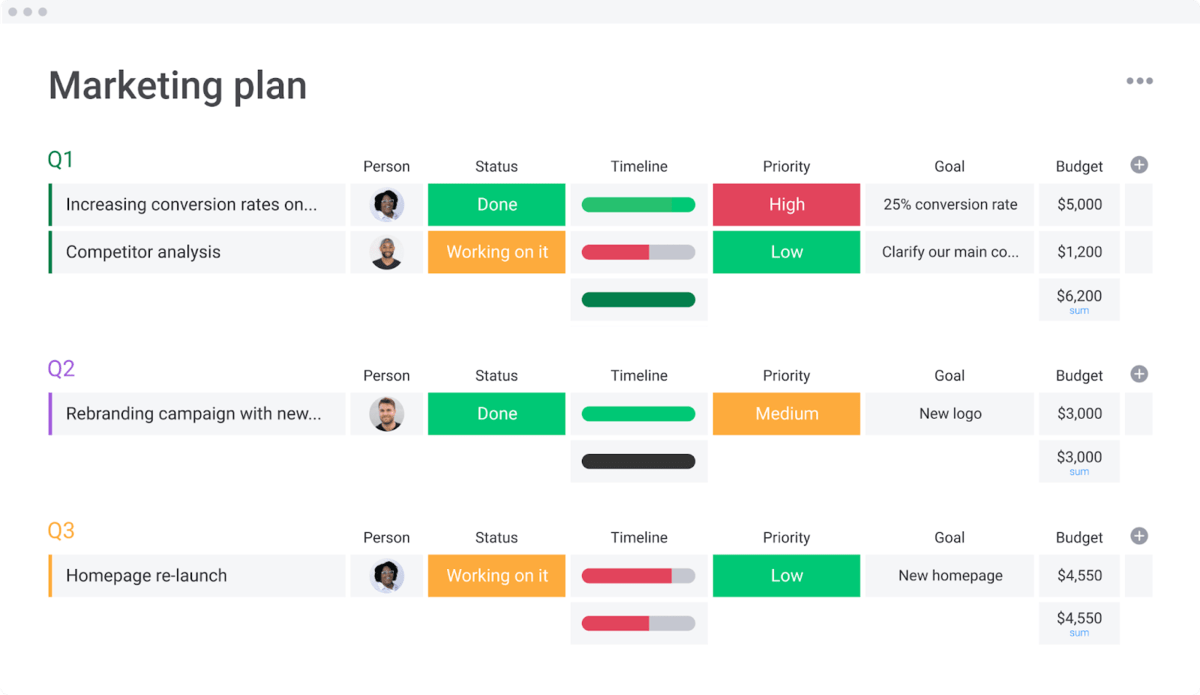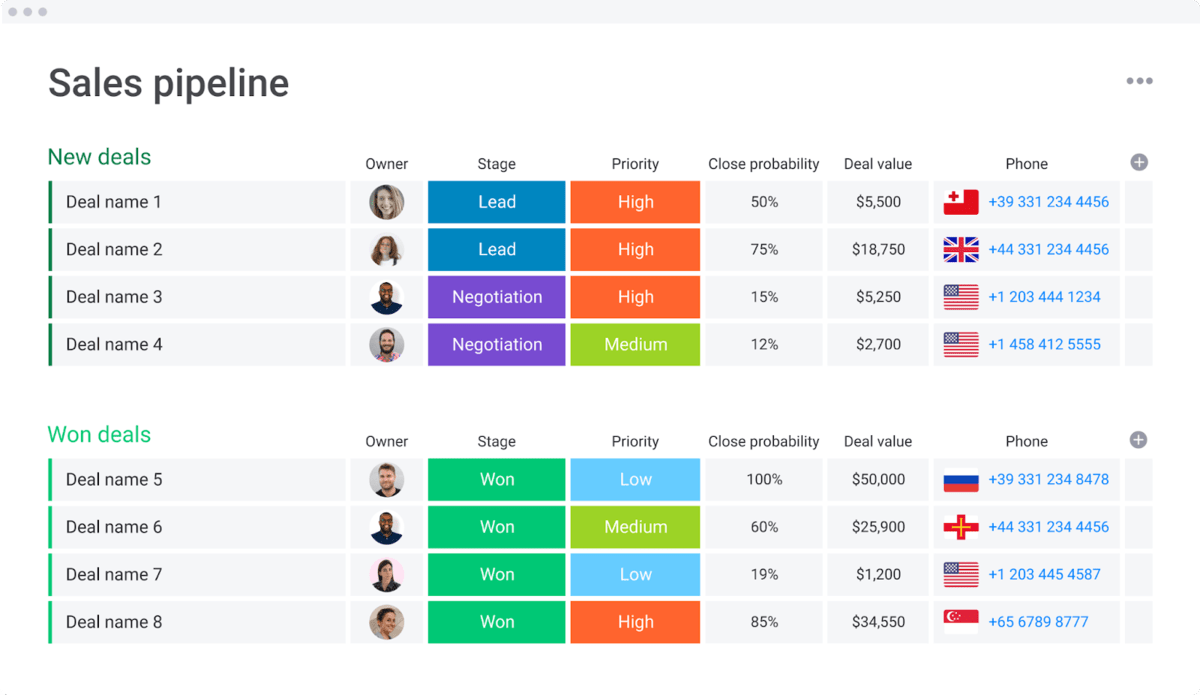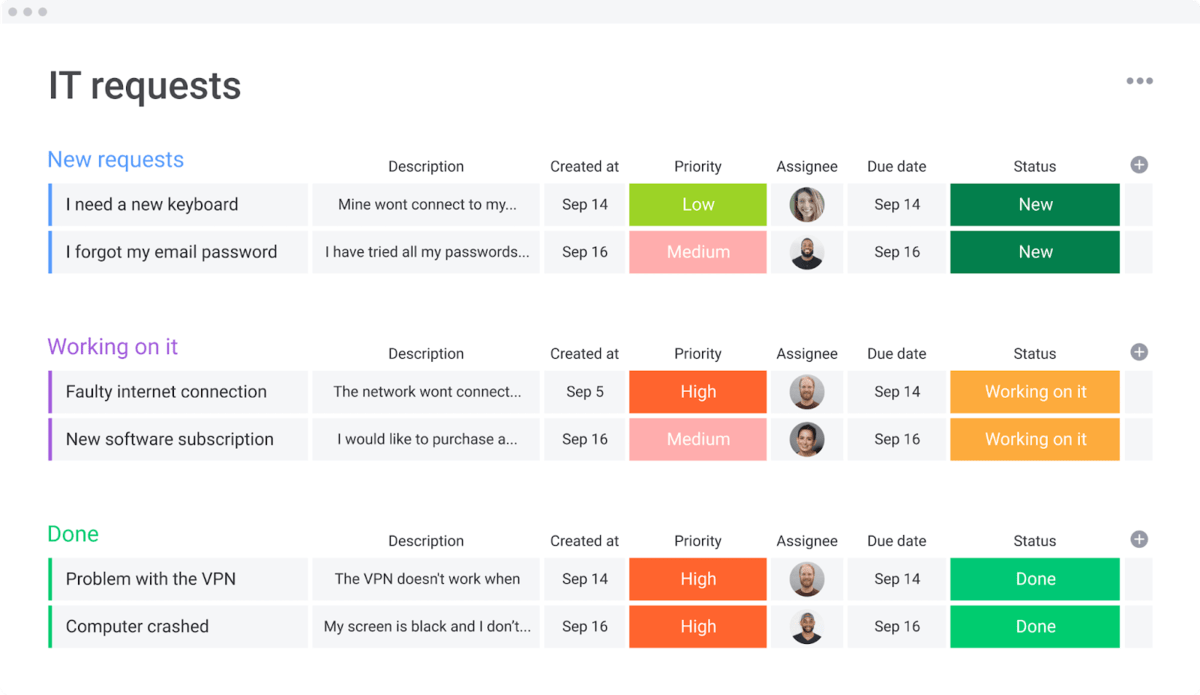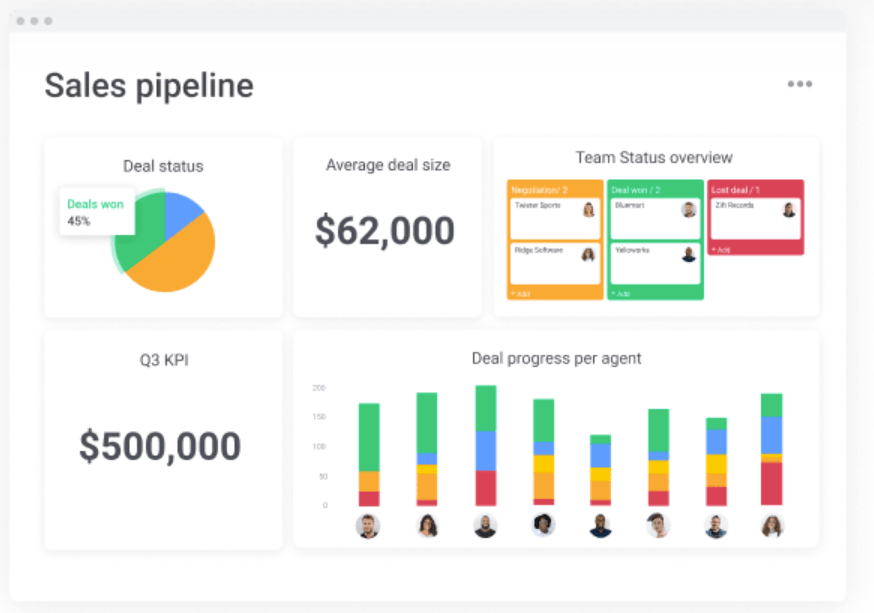We all know that setting goals is important to help us get closer to our overall future vision.
And, by now, most of us know that we need to be smarter in how we set our goals if we want to achieve them successfully.
But sometimes, putting pen to paper and getting started on what they actually look like is tough. It’s often easier to tweak something already written and personalize it to fit your needs, than it is to start from scratch.
With that in mind, in this article, we’ll share some SMART goals examples for 4 different business functions, plus show you how software can make setting and achieving goals a whole lot easier.
What are SMART goals?
Ok, so you may have heard the acronym SMART before. But, what does it stand for, and what does it have to do with goals?
Well, just to recap, the acronym SMART stands for:

Let’s briefly look at each of the 5 elements in detail:
- Specific. It’s important to be specific about what your goal is. Lack of clarity — or several variables packed into one goal — makes it hard to know exactly where — or on what — to focus your resources.
- Measurable. Adding a tangible success measure to your goal makes it simple to see whether it’s been achieved.
- Attainable. It’s important to create goals that are attainable. It’s fine for them to be stretch goals but, if you don’t have the capability or capacity to achieve them, it can be demotivating and could be a waste of effort.
- Relevant. Speaking of effort, it’s important to place it where it will contribute to business success. Don’t waste time chasing goals that are irrelevant to your wider organizational strategy.
- Time-bound. Make sure you’re clear exactly when something should be achieved by. It’s important for measuring success and also for motivating people to strive for the goal.
Why are SMART goals important?
SMART goals are important as, without them, teams can lack clarity about the steps needed to achieve the overall goal. It might be hard to agree on the effort or the direction on which to focus it.It’s also harder for managers to judge what resources might need to be made available and for stakeholders to judge when the goal has been successfully achieved.
For lots more information all about how to set SMART goals, check out our article.
8 SMART goals examples
To get you started, let’s look at a few examples of common functional goals across 4 business departments and check out how to make them SMARTer.
Marketing
The marketing department is the face of your business.
It’s responsible for:
- Promoting your products and services
- Building your business’s reputation
- Generating leads through promotional activity and advertising
- Reminding your existing customers that you’re their company of choice when they’re ready to make a purchasing decision
Some common department goals that might form part of the marketing strategy include:
- Developing brand awareness
- Increasing website traffic and acquiring new customers
- Improving internal communications, including company messaging
- Exploring new markets, products, or services
- Strengthening existing customer relationships
These are all important goals for a marketing function, so how do we make them smarter?
Using what we’ve learned, let’s rewrite a few of these:
Marketing example 1: increase web traffic
While this goal is specific and relevant to a marketing function, it’s not measurable or time-bound.
Assuming the department has the appropriate digital marketing skills and capacity, it’s likely to be attainable.
But, a better goal might be:
Increase the number of site visits to our main website by 15% by the end of Q2.

Marketing example 2: improve internal communications
There’s quite a lot we can improve about this goal, including its specificity.
For example, which channels are you going to use, and who is the audience?
Perhaps you actually want to build awareness of the company’s mission in employees so they can act as ambassadors for the brand.
A better goal might be:
Deliver an all-staff internal newsletter campaign reinforcing the business mission statement by the end of June. Measure the success of the campaign through an employee survey in mid-July and mid-October.
Sales
The sales department is the engine room of your business’ growth.
It’s responsible for:
- Planning an approach that maximizes the likelihood of selling the business’ products or services
- Developing sales targets to meet revenue goals and executing against them
- Securing new business by qualifying leads and converting them to customers
- Maintaining current revenue through forging strong customer relationships
Some common departmental goals that might form part of the Sales team strategy could include:
- Increasing sales volumes
- Exploiting upsell or cross-selling opportunities
- Securing new accounts
- Expanding into new territories
While these are all valid sales goals, we already know we can go one better. So, what could these look like after a refresh?
Sales example 1: exploit upsell or cross-selling opportunities
This goal isn’t as specific as it could be as there are 2 variables to consider — upselling and cross-selling. It’s also not measurable or time-bound.
Its attainability likely depends on several factors, including the market and the skills of your sales reps.
Alongside the main goal, you might decide to add a professional development goal for your reps to increase the likelihood of achieving it.
A better goal might be:
Increase the number of total sales where upselling is achieved by 20% by June with a further 15% increase by the end of the calendar year.
Sales example 2: secure new accounts
Again, let’s get more specific with this goal and add some more details, so it’s easy to measure whether you’ve achieved your goal.
A better goal might be:
Secure 3 new large ($1m+) accounts by the end of February, including 1 in a new territory.

DevOps
DevOps combines teams working on software development with wider IT operations.
DevOps is a collaborative effort with responsibility for:
- Speeding up software development and integration to meet changing needs
- Improving the stability and reliability of your platform
- Delivering rapid releases to drive software improvement
- Develop and implement scaling practices enabling infrastructure flexibility
- Ensure the ongoing security and compliance of the digital infrastructure
Some common departmental goals that might form part of the DevOps strategy could include:
- Decreasing turnaround times on new releases or bug fixes
- Improving the user experience by reducing system downtime
- Maintaining software and system compliance protocols
- Decreasing time to market for new application development

By now, you can probably see how each of these goals can be improved. Let’s take a quick look at 2 of them:
DevOps example 1: decreasing turnaround times
While it’s pretty clear what this goal is hoping to achieve, it could be strengthened by making it more measurable.
A more measurable goal might be:
Reduce the overall turnaround time on Category 3 (Minor) bug fixes from 72 hours to 48 hours by the end of September.
DevOps example 2: improving the user experience by reducing system downtime.
At the moment, this goal has 2 variables which means it’s not specific enough to measure effectively.
Getting clear on which variable you want to measure — user experience or system downtime — will make this goal SMARTer.
A better goal might be:
Decrease unplanned system downtime by 5% month-on-month over the next quarter
Customer support
Customer support is how customers experience the human side of your business.
It’s responsible for:
- Providing information and guidance on products and services
- Resolving queries and handling customer complaints
- Processing returns of goods or services
- Collecting feedback, monitoring customer behavior, and identifying trends
- Conducting customer outreach
Some common departmental goals that might form part of the Customer Support strategy could include:
- Increasing overall customer satisfaction
- Reducing customer wait time
- Decreasing customer churn rate
- Improving service levels
- Decreasing cost-per-contact while maintaining customer experience
Most customer support goals are easily quantifiable, which means there’s no excuse not to link them to tangible measures.
Let’s improve a few of the above:
Customer support example 1: increasing overall customer satisfaction
Customer satisfaction (CSAT) is a classic measure of effective customer support and is gathered through customer feedback , typically with a product feedback tool.
It can be used after a specific incidence — such as a call to customer support — or as a follow-up mechanism after a sale.
A better goal might be:
Increase CSAT score received post-inbound-call interaction from 82% to 87% within 3 months.
Customer support example 2: improving service levels
The problem with this goal as it stands is it is non-specific. Is this goal about improving how quickly calls are answered? Or perhaps it’s about how well customers felt their query was resolved?
To make this SMARTer, we need to add more detail on exactly what we’re measuring and what improvement we want to see.
A more specific goal might be:
Reduce customer wait time to under 60 seconds for all chat interactions by the end of Q2.
You’ve now got the tools to make all of the goals we’ve looked at above SMARTer. It’s important to keep checking the relevance of your goals against the wider organizational strategy and changing them as required.
You’ll also need to weigh up how attainable each goal is.
For example, it would be easy to reduce customer wait time if you added 100 more customer support agents.
But that would significantly increase your departmental budget impacting your cost per contact. Like most things, a balance is usually required.
How monday.com can support SMART goal setting
A crucial first step in setting SMART goals is understanding why you’re setting the goals you’re choosing to set.
At an organizational level, perhaps there’s a key business metric that needs to be improved. Perhaps you have departmental targets from last year you want to challenge yourself to beat.
Or maybe you’ve received feedback from stakeholders about something that could be improved, and you want to set a goal around that.
Having visibility over performance data is vital to informing goal setting.
With monday.com, it’s easy to see how you’re doing against a range of metrics. Plus, we have 8 different ways to visualize information, so it’s easy to present it in a way that works for you and your team.

Want to actively engage internal stakeholders or customers to check how you’re doing? Why not use a monday.com feedback form? Our forms upload data received straight into your dashboard, enabling you to judge performance at a specific moment.
Once you know why you’re choosing your goal, it’s time to get about writing it. Which, by now, you’re an expert in.
Next, once you’re happy with your SMART goal, don’t forget to share it. This is important for 2 reasons:
- It gives you a chance to check with other stakeholders that the goal is an attainable one. If your goal is reliant on others, they might suggest your target is out of reach. Equally, they may encourage you to stretch a bit further and envision greater success.
- Goals that are shared by a team are much more likely to be achieved than ones imposed from outside. In fact, getting your team involved earlier, when you’re just creating the goal, could be an important factor in gaining their buy-in for it.
Happily, monday.com makes collaborating simple. It’s easy to view, share, and annotate documents, @tag others for their input, and communicate either in-platform or through integration with your favorite app.
So everyone can be part of making department goals SMARTer.

Once your goal is set, make sure to monitor progress against it and celebrate milestones achieved along the way that bring you closer to your overall goal.
Sadly, sometimes, you won’t meet your goal.
Maybe it wasn’t as attainable as you had initially thought, or something changed — such as resource availability — to make it less so.
Or perhaps something changed in the business environment that made the goal less relevant.
Whatever the reason, make sure you take the learning forward when you set your next set of goals to give you the best possible chance of success.
SMART goals bring you closer to your future vision
Setting SMART goals helps you break down your overall vision of success into smaller milestones.
Goals that are developed using the SMART framework are useful as it’s much clearer what needs to be done to move work forward and how that work contributes to the bigger picture.
It’s also easier to identify the resources required to achieve the goal and to see when the goal has been reached.
Hopefully, our SMART goals examples have inspired you to get out and set new goals. Why not get started with our organizational plan template today?
